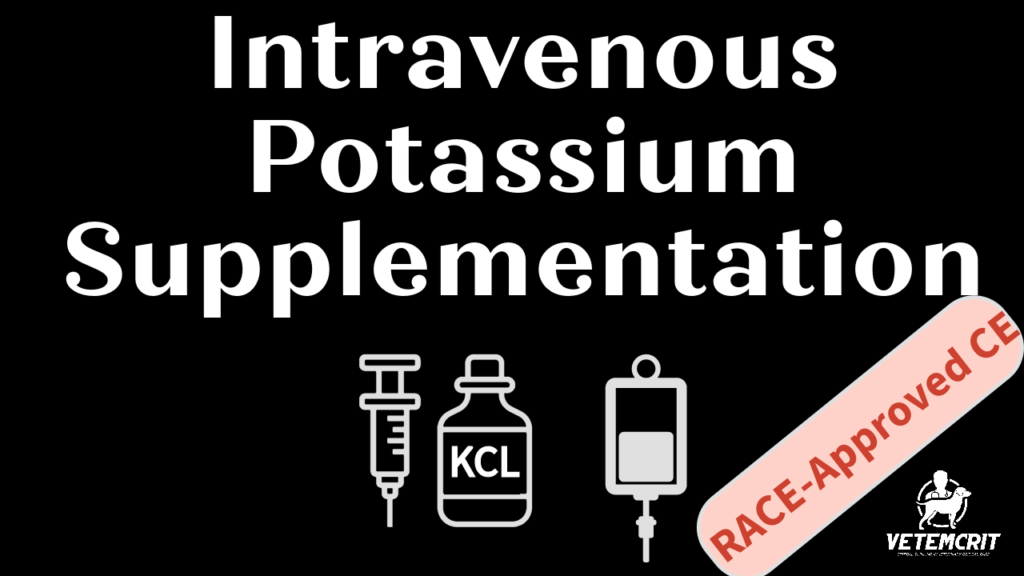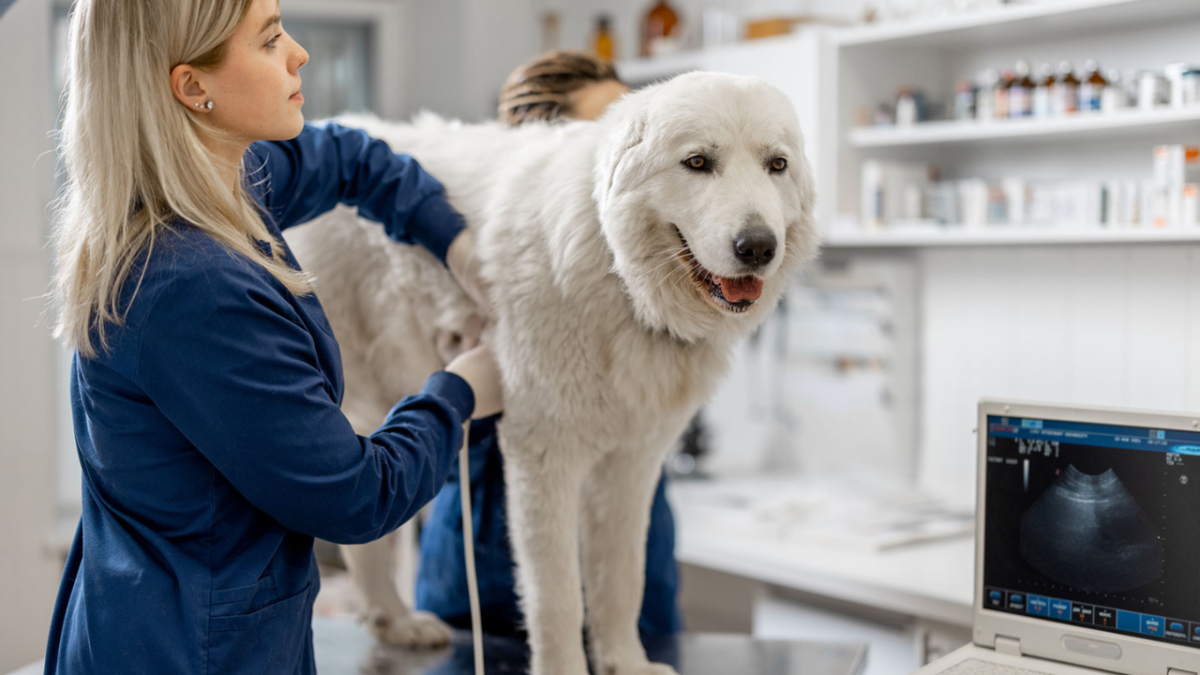Lung and pleural space point-of-care ultrasound is usually performed in sternal recumbency unless a dog cannot tolerate this position. In this scenario, the patient can be positioned in right or left lateral recumbency to evaluate all lung fields. The Pleural and Lung Protocol (PLUS) is my preferred method to evaluate the pleural space and lung parenchyma (Boysen et al. 2022).
Assessment of the pleural space for the presence of pneumothorax, pleural effusion and diaphragmatic hernia
Pneumothorax
Pneumothorax normally appears as the absence of a lung sliding (aka “a glide sign”). The presence of a glide sign rules out pneumothorax. Lack of a glide sign should prompt consideration of pneumothorax, but a glide sign is not always easy to identify, even in healthy patients. Other causes of absent glide sign may include apnea, one lung ventilation and pleural adhesions.
The presence of B-lines excludes pneumothorax at those focal probe placement sites because B-lines originate from the lung surface. B lines are not always visible in healthy patients.
Finding a lung point confirms a pneumothorax on that side of the thorax. If the glide sign is not seen and there is strong suspicion of a pneumothorax a search for the lung point should be undertaken as identification of the lung point is pathognomonic for a pneumothorax.
Finally, if the lung point is not identified, the assessment for the presence of an asynchronous or double curtain sign (Boysen et al. Front Vet Sci 2019) is performed.

Abnormal curtain sign
With pneumothorax, an abnormal curtain sign is the vertical edge separating free air in the caudal pleural space from abdominal contents. The asynchronous curtain sign can be defined as movement of the vertical edge in the opposite direction of the abdominal contents or minimal movement of the vertical edge while abdominal contents move caudally. The double curtain sign can be defined as two vertical edges visible in the same sonographic window.
Watch normal and abnormal ultrasound lung patterns here:
Pleural effusion
The subxiphoid and modified transthoracic views can be used to increase the sensitivity of pleural effusion identification.
The subxiphoid view with the depth increased beyond the level of the diaphragm should be used to detect pleural effusion. The probe is placed more parallel in orientation (relative to the spine) and the depth setting adjusted deeper to allow the ultrasound beam to extend into the thorax via the liver.
With the patient positioned in lateral recumbency, gravity dependent widest point of the thorax is examined for the presence of small amount of pleural effusion.
With the patient in sternal recumbency: if pleural effusion is not identified with the probe at perpendicular to the ribs, the probe can be be turned parallel to the ribs to try and identify smaller accumulations of fluid between the lung and ventral body wall.
Diaphragmatic hernia
The diaphragmatic hernia can be diagnosed in animals that have abdominal viscera in the thorax OR 2 or more of the following findings during the thoracic ultrasonographic examination (Spatini et al. VRU 2002):
- Assymetrical cranial hepatic border
- Abnormal position of the heart
- Pleural fluid
Evaluation of lung parenchyma using the PLUS ultrasound protocol
The ultrasound probe is held horizontal at each site and moved according to the PLUS ultrasound protocol. The probe is angled dorsally and ventrally to optimize the view that provided good visualization of pleural line, A line(s) and the maximum number of B lines or other pertinent artifacts per intercostal space for that window.
A site in which > 3 B lines are present is considered abnormal (interstitial syndrome).
Lung consolidation abnormalities may include: nodule, shred, tissue and wedge signs.
A nodule sign is defined as a small, well‐marginated hypoechoic circular or ellipsoid structure, with or without a hyperechoic distal border, and with or without acoustic enhancement appearing as a B‐line extending from its distal border through the far field of the ultrasound screen (Ward et al. JVIM 2018).
A shred sign is defined as non-translobar consolidation with an irregular (“shredded”) border between aerated and consolidated lung regions (Lichtenstein et al. CHEST 2009).
A tissue sign is defined as a translobar consolidation arising from the pleural line, and it looks like liver parenchyma (Lichtenstein et al. CHEST 2009).
A wedge sign represents a wedge-shaped (triangular) subpleural hypoechoic pulmonary lesion (Comert et al. Ann Thorac Med 2013)
Watch the video with different lung patterns here:
References:
- The Essentials of Veterinary Point of Care Ultrasound: Pleural Space and Lung (Boysen et al.)
- Boysen, S., McMurray, J., & Gommeren, K. (2019). Abnormal Curtain Signs Identified With a Novel Lung Ultrasound Protocol in Six Dogs With Pneumothorax. Frontiers in veterinary science, 6, 291. https://doi.org/10.3389/fvets.2019.00291
- Lichtenstein, D. A., Mezière, G. A., Lagoueyte, J. F., Biderman, P., Goldstein, I., & Gepner, A. (2009). A-lines and B-lines: lung ultrasound as a bedside tool for predicting pulmonary artery occlusion pressure in the critically ill. Chest, 136(4), 1014–1020. https://doi.org/10.1378/chest.09-0001
- Comert, S. S., Caglayan, B., Akturk, U., Fidan, A., Kıral, N., Parmaksız, E., Salepci, B., & Kurtulus, B. A. (2013). The role of thoracic ultrasonography in the diagnosis of pulmonary embolism. Annals of thoracic medicine, 8(2), 99–104. https://doi.org/10.4103/1817-1737.109822

